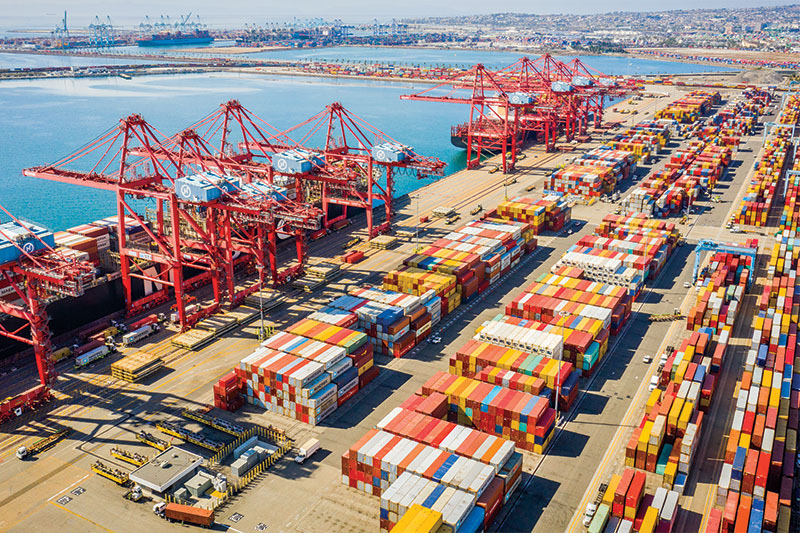In the rapidly evolving landscape of container ports, efficiency and connectivity are paramount for seamless operations. Traditional network infrastructures often face challenges in providing reliable and flexible connectivity across vast port areas, limiting the potential for optimization. Enter Rajant Kinetic Mesh Networks, a revolutionary solution that is reshaping the way container ports manage their communication and data exchange. In this article, we will explore the key features and benefits of Rajant Kinetic Mesh Networks and how they play a pivotal role in enhancing the performance of container ports.
The Challenge of Connectivity in Container Ports:
Container ports are sprawling environments with numerous challenges that can hinder effective communication and data transfer. These challenges include the vastness of the port area, the presence of large metal structures, and the need for continuous connectivity for mission-critical applications such as asset tracking, security surveillance, and equipment automation. Traditional Wi-Fi and wired networks often struggle to provide the required coverage and reliability in such dynamic and complex environments.
Rajant Kinetic Mesh Networks: A Game-Changing Solution:
Rajant Kinetic Mesh Networks offer a dynamic and adaptable approach to connectivity, addressing the limitations of traditional networks in container ports. The fundamental concept behind Rajant’s technology lies in its ability to create a mobile, self-healing, and resilient mesh network that ensures continuous connectivity even in challenging environments.
Key Features and Benefits:
- Mobility and Flexibility: Rajant’s Kinetic Mesh Networks are designed to support mobile applications seamlessly. This is particularly crucial in container ports where vehicles, cranes, and other equipment are constantly on the move. The network dynamically adapts to the changing topology of the port, ensuring that devices stay connected regardless of their location.
- Self-Healing Architecture: The self-healing capability of Rajant’s mesh network is a game-changer for container ports. If a device or a connection point fails, the network automatically reroutes traffic through the most efficient path, minimizing downtime and ensuring continuous operations.
- Resilience in Challenging Environments: Container ports are known for their challenging radio frequency (RF) environments with metal structures and interference. Rajant’s Kinetic Mesh Networks are designed to thrive in such conditions, providing robust and reliable connectivity where traditional networks might struggle.
- Scalability: As container ports expand and evolve, the demand for scalable network solutions becomes crucial. Rajant’s technology allows for easy scalability, ensuring that the network can grow with the port’s requirements without compromising performance.
- Security: Security is a top priority in container ports, given the sensitive nature of the operations. Rajant’s Kinetic Mesh Networks include robust security features, such as encryption and authentication protocols, to safeguard data and communications from potential threats.
Use Cases in Container Ports:
- Asset Tracking: The ability to track containers, vehicles, and equipment in real-time is essential for optimizing port logistics. Rajant’s Kinetic Mesh Networks enable accurate and instantaneous asset tracking, leading to improved efficiency and reduced operational costs.
- Video Surveillance: Container ports rely heavily on video surveillance for security and safety. The high-performance and reliable connectivity provided by Rajant’s networks ensure that video feeds are consistently available, allowing for effective monitoring and response.
- Automation and Control: Automated container handling and equipment control systems require low-latency and reliable communication. Rajant’s Kinetic Mesh Networks provide the necessary connectivity for smooth and efficient automation processes within the port.
Conclusion:
In the dynamic world of container ports, Rajant Kinetic Mesh Networks stand out as a transformative technology, addressing the connectivity challenges that traditional networks struggle to overcome. By providing a resilient, mobile, and scalable solution, Rajant’s technology is playing a pivotal role in enhancing the efficiency, security, and overall performance of container ports around the world. As the industry continues to embrace digital transformation, the adoption of Rajant Kinetic Mesh Networks is poised to be a key driver of success in the evolving landscape of maritime logistics.
